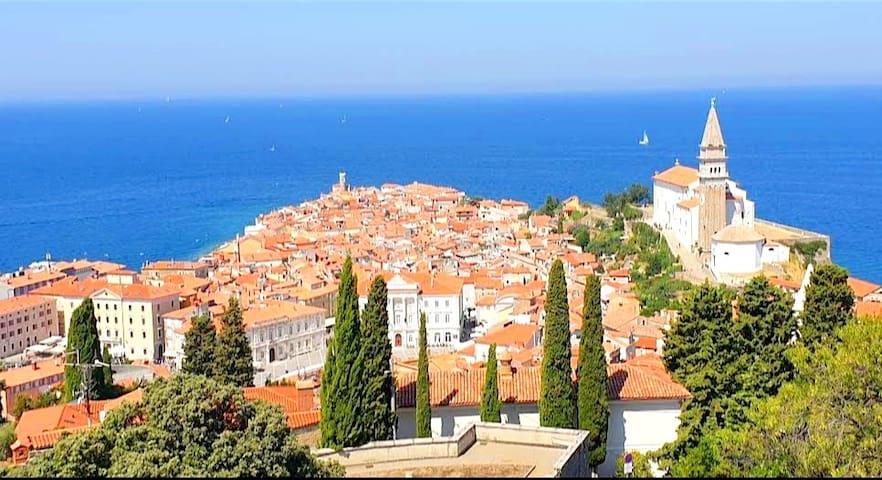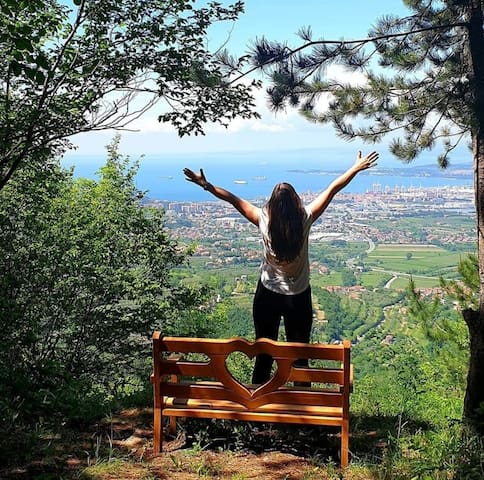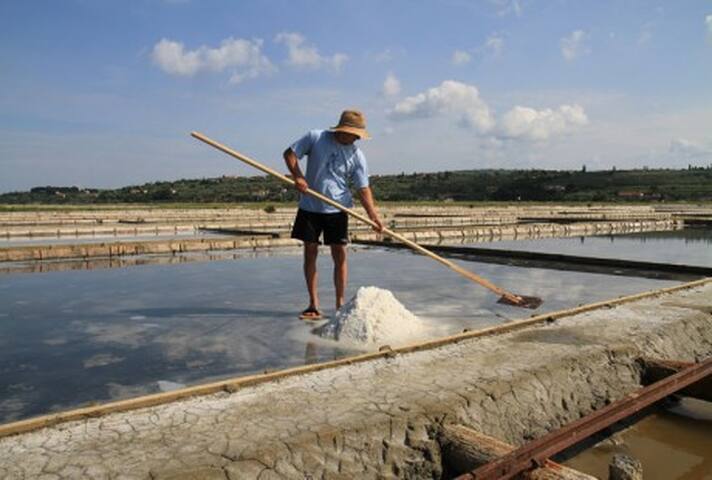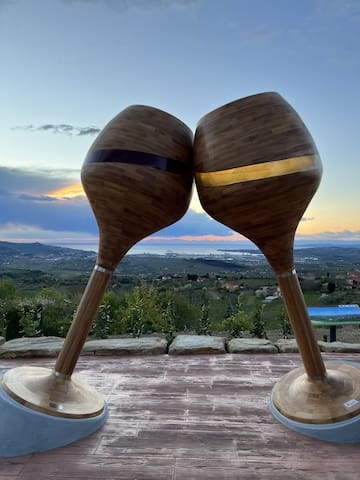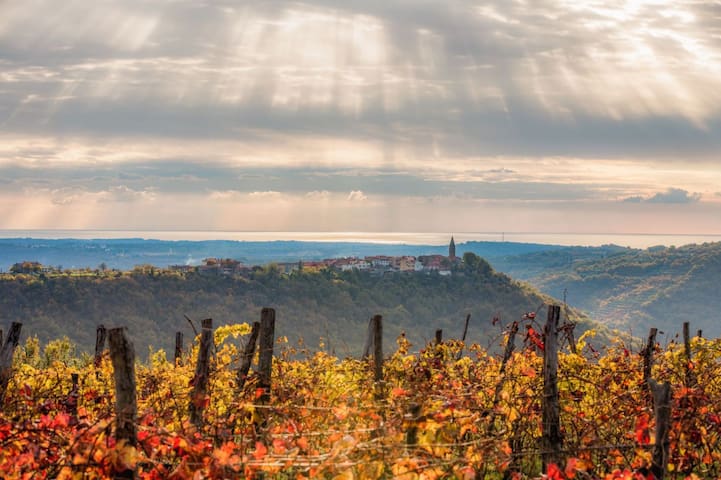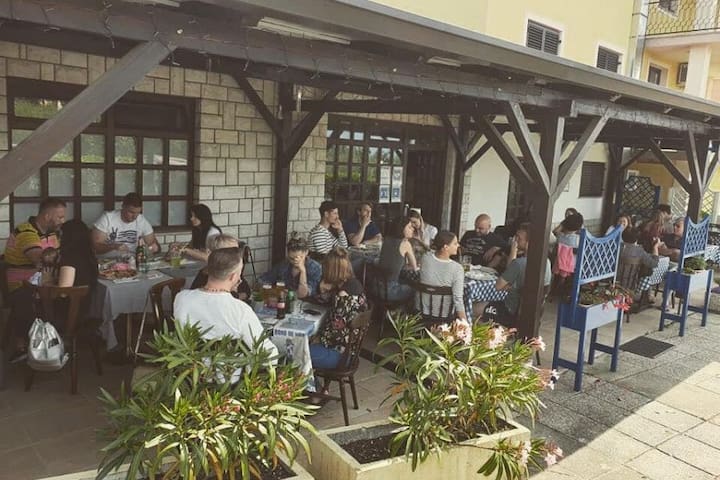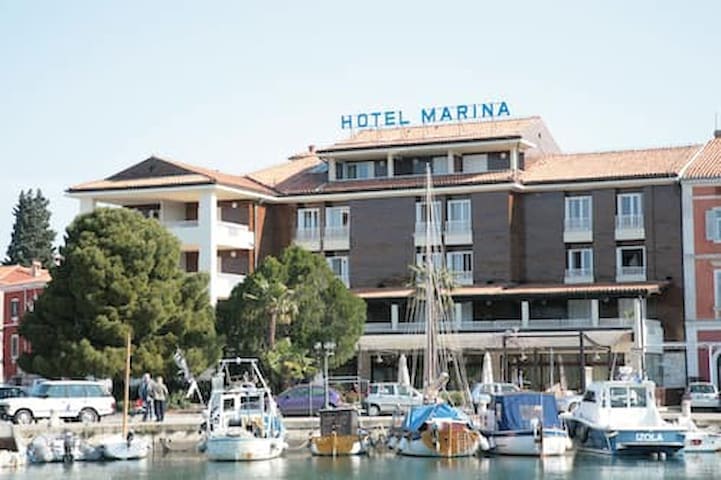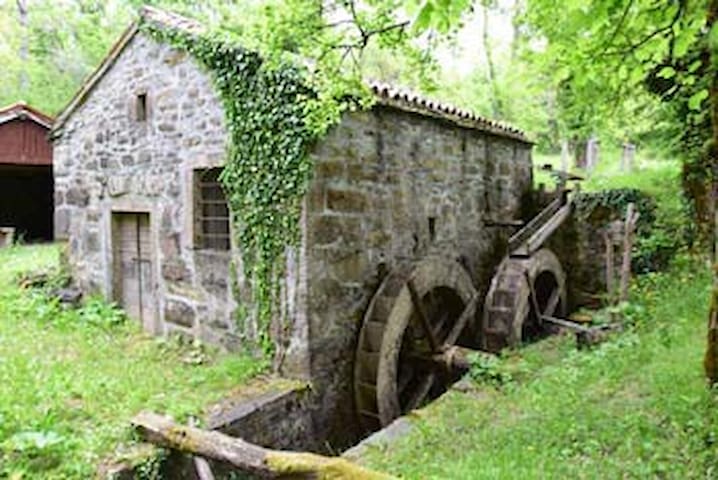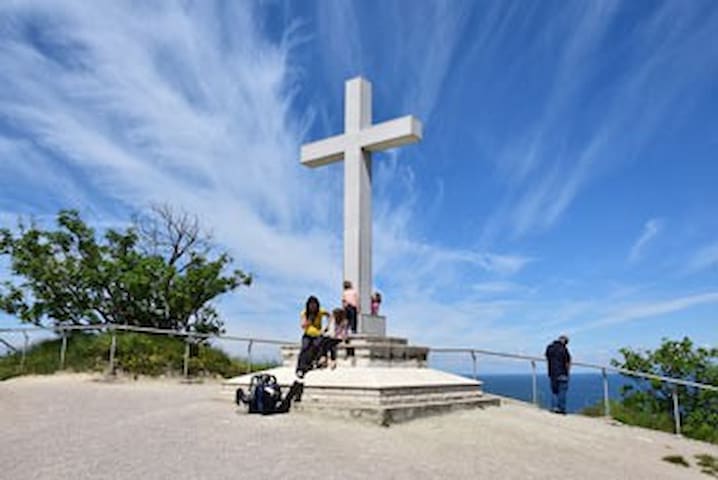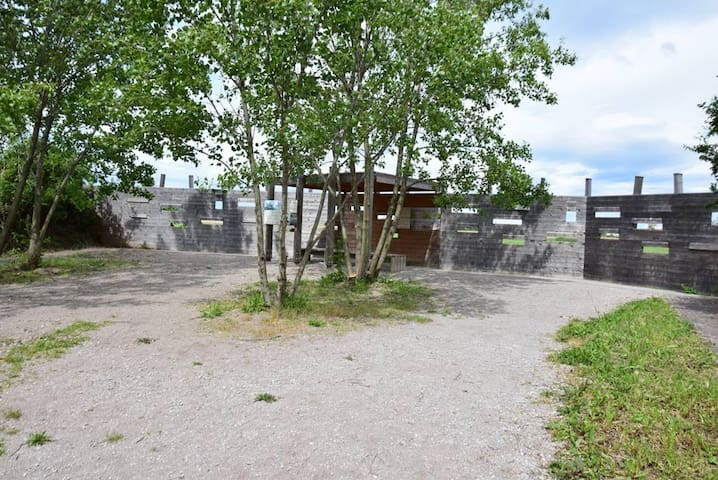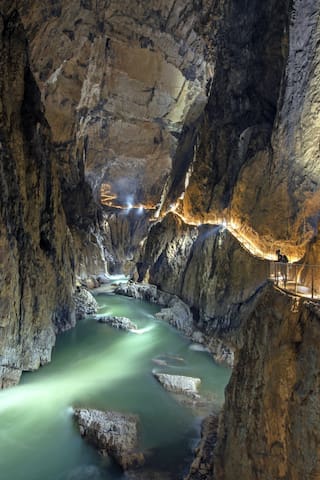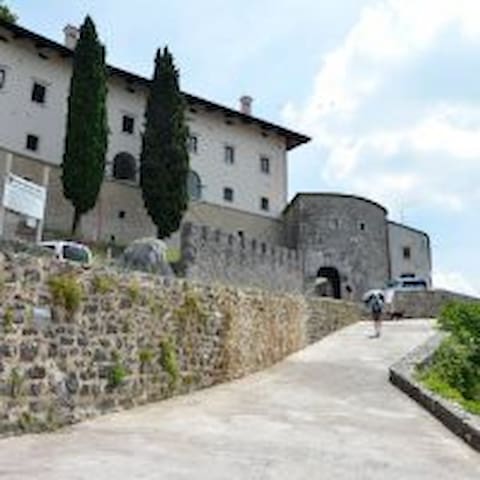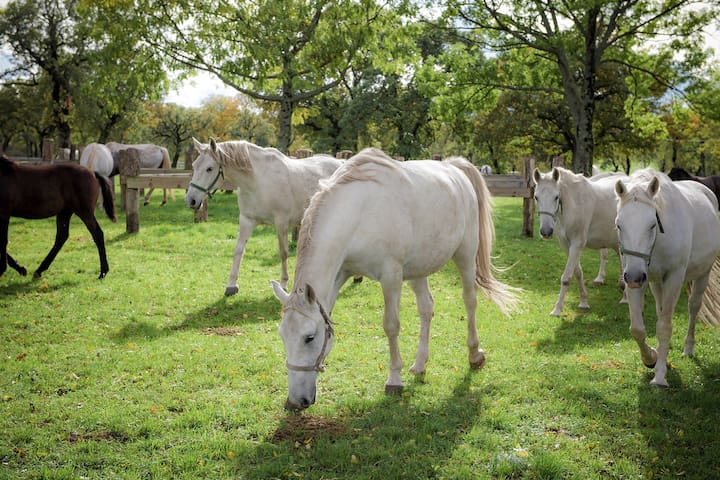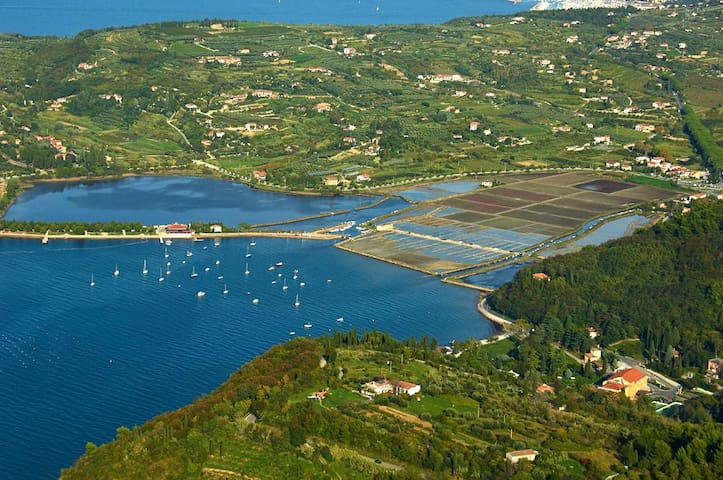City/town information
Piran... our Adriatic treasure! The beautiful medieval seaside town, huddled on a pointed peninsula, always fascinates us and reminds us of the diversity of our country. Breathe in the sea air and take the time to climb to the top of the city walls at sunset, go diving on the piranha punta, have a romantic dinner or play soccer with the kids on Tartini square. Get lost in its narrow streets, admire the Venetian architecture and explore some part that you missed on your previous visit.
Piran has always been an important "player" in this area. Fishing, fruit and vegetable production in the fertile hinterland, trade and especially salt production were of key importance in the development of the city. The influence of Venice has always been strong, and for more than 500 years Piran was also part of the Republic of Venice, which can be seen today especially in its architecture. Looking at the red Venetian house on the edge of Tartini square, you will think for a moment that you are actually in Venice, and you will notice lions (the symbol of the Republic of Venice) on the facades of many houses in Piran.
160 Recomendado por los habitantes de la zona
Piran
Piran... our Adriatic treasure! The beautiful medieval seaside town, huddled on a pointed peninsula, always fascinates us and reminds us of the diversity of our country. Breathe in the sea air and take the time to climb to the top of the city walls at sunset, go diving on the piranha punta, have a romantic dinner or play soccer with the kids on Tartini square. Get lost in its narrow streets, admire the Venetian architecture and explore some part that you missed on your previous visit.
Piran has always been an important "player" in this area. Fishing, fruit and vegetable production in the fertile hinterland, trade and especially salt production were of key importance in the development of the city. The influence of Venice has always been strong, and for more than 500 years Piran was also part of the Republic of Venice, which can be seen today especially in its architecture. Looking at the red Venetian house on the edge of Tartini square, you will think for a moment that you are actually in Venice, and you will notice lions (the symbol of the Republic of Venice) on the facades of many houses in Piran.
Pomjan is an old charming village in which the love seat is hidden. It is definitely worth a walk to it, as it offers a wonderful view of the sea and the city of Koper.
Pomjan
Pomjan is an old charming village in which the love seat is hidden. It is definitely worth a walk to it, as it offers a wonderful view of the sea and the city of Koper.
In the Sečovel salt marsh landscape park, the past and the present still shake hands. The traditional hand-harvesting of salt on salt plots is not only a specialty of the cultural heritage of the Mediterranean Slovenia, but also provides conditions that enable the preservation of the most important natural heritage of the Sečovel salt pans. According to written sources, the Sečovel salt pans are more than seven hundred years old, and some authors swear that they are significantly older. Once there were salt pans in Slovenian Istria all along the sea coast, but today they are preserved only near Sečovlje and in Strunjan. In 1989, the Sečovel Salt Flats were protected as a landscape park, in which only those economic activities that do not threaten the natural balance are permitted. Such activities are salt farming and the cultivation of marine organisms. Today, the salt pans are protected by state regulation as a Landscape Park.
8 Recomendado por los habitantes de la zona
Sečovlje
In the Sečovel salt marsh landscape park, the past and the present still shake hands. The traditional hand-harvesting of salt on salt plots is not only a specialty of the cultural heritage of the Mediterranean Slovenia, but also provides conditions that enable the preservation of the most important natural heritage of the Sečovel salt pans. According to written sources, the Sečovel salt pans are more than seven hundred years old, and some authors swear that they are significantly older. Once there were salt pans in Slovenian Istria all along the sea coast, but today they are preserved only near Sečovlje and in Strunjan. In 1989, the Sečovel Salt Flats were protected as a landscape park, in which only those economic activities that do not threaten the natural balance are permitted. Such activities are salt farming and the cultivation of marine organisms. Today, the salt pans are protected by state regulation as a Landscape Park.
The first wine fountain in Slovenia offers a unique and unforgettable experience for wine lovers and gourmets. With a wonderful view of the Slovenian coast, you can treat yourself to excellent open wines from local wineries and premium wines from the Vinakoper winery. Food lovers can taste Istrian cuisine in the pavilion, where they offer truffles, pickled delicacies, chocolates, products with sea salt and many more excellent locally produced delicacies.
6 Recomendado por los habitantes de la zona
Marezige
The first wine fountain in Slovenia offers a unique and unforgettable experience for wine lovers and gourmets. With a wonderful view of the Slovenian coast, you can treat yourself to excellent open wines from local wineries and premium wines from the Vinakoper winery. Food lovers can taste Istrian cuisine in the pavilion, where they offer truffles, pickled delicacies, chocolates, products with sea salt and many more excellent locally produced delicacies.
Koper is one of the oldest Slovenian cities. It hides a beautiful and lively old town. The long reign of the Republic of Venice left a fantastic architectural legacy that is definitely worth a visit. Explore the narrow streets of Koper, discover its many markets and mingle with the locals.
Koper or Capo d'Istria ( the head of Istria) was once an island and a saltworks town. Its beginnings date back to the Roman period, but the Republic of Venice gave it its greatest stamp, during which it flourished economically and culturally. With its collapse and the construction of the Trieste-Vienna railway, Koper lost a little of its importance, but after the Second World War it began to develop more strongly again and over time became the economic capital of the coastal region and an important port city.
46 Recomendado por los habitantes de la zona
Koper
Koper is one of the oldest Slovenian cities. It hides a beautiful and lively old town. The long reign of the Republic of Venice left a fantastic architectural legacy that is definitely worth a visit. Explore the narrow streets of Koper, discover its many markets and mingle with the locals.
Koper or Capo d'Istria ( the head of Istria) was once an island and a saltworks town. Its beginnings date back to the Roman period, but the Republic of Venice gave it its greatest stamp, during which it flourished economically and culturally. With its collapse and the construction of the Trieste-Vienna railway, Koper lost a little of its importance, but after the Second World War it began to develop more strongly again and over time became the economic capital of the coastal region and an important port city.
Padna is a small old Istrian village in the hinterland of Piran. In it, stone houses are built side by side and around the village church of St. Blaza. Next to the church stands a 26-meter high stone bell tower, which was built by the people of Padna in 1885. In the renovated premises of the former school in Padna, there is a gallery of Božidar Jakac, where a collection of prints and drawings is on display. One of the most prominent Slovenian painters of the 20th century spent his childhood in Padna.
At the end of April, the Festival of ''Oil and Bledež'' (vegetable like spinach) takes place, where you can taste the authentic local cuisine of lovely Istria.
Padna, Sečovlje - Sicciole, Eslovenia
Padna is a small old Istrian village in the hinterland of Piran. In it, stone houses are built side by side and around the village church of St. Blaza. Next to the church stands a 26-meter high stone bell tower, which was built by the people of Padna in 1885. In the renovated premises of the former school in Padna, there is a gallery of Božidar Jakac, where a collection of prints and drawings is on display. One of the most prominent Slovenian painters of the 20th century spent his childhood in Padna.
At the end of April, the Festival of ''Oil and Bledež'' (vegetable like spinach) takes place, where you can taste the authentic local cuisine of lovely Istria.
Culinary
Suggestions for something good to eat near us
Pizzerija Fuoriseria, Šared, Izola
It offers completely different pizzas from the usual ones. Their specialty starts with the dough itself, as they do not use added yeast, which makes the pizza much easier to digest. All the ingredients on the pizzas are carefully selected and of the best quality. They also offer pizzas for vegans and a large selection of craft beer and wine from various renowned Slovenian winemakers.
Šared
ŠaredPizzerija Fuoriseria, Šared, Izola
It offers completely different pizzas from the usual ones. Their specialty starts with the dough itself, as they do not use added yeast, which makes the pizza much easier to digest. All the ingredients on the pizzas are carefully selected and of the best quality. They also offer pizzas for vegans and a large selection of craft beer and wine from various renowned Slovenian winemakers.
Restaurant Hotel Marina Izola
With a clear vision, hard work and the support of an excellent team, in a few years he achieved what many thought was impossible: as one of the first in the region, they turned a boarding house restaurant into a top à la carte gastronomic destination.
Together with the other chefs, the chef adapts the recipes to the seasons, chooses only the best goods from local providers and cooks according to the principle of live cuisine, without heating or flavor enhancers.
Their slogan "FROM THE SEA TO THE PLATE" perfectly describes the unwavering and persistent path from which they do not derail - all sea and Istrian delicacies are seasonal, fresh and prepared on the fly.
A special stamp is added by homemade or local cold-pressed olive oil, which is the basis for the preparation of culinary masterpieces.
43 Recomendado por los habitantes de la zona
Izola
Restaurant Hotel Marina Izola
With a clear vision, hard work and the support of an excellent team, in a few years he achieved what many thought was impossible: as one of the first in the region, they turned a boarding house restaurant into a top à la carte gastronomic destination.
Together with the other chefs, the chef adapts the recipes to the seasons, chooses only the best goods from local providers and cooks according to the principle of live cuisine, without heating or flavor enhancers.
Their slogan "FROM THE SEA TO THE PLATE" perfectly describes the unwavering and persistent path from which they do not derail - all sea and Istrian delicacies are seasonal, fresh and prepared on the fly.
A special stamp is added by homemade or local cold-pressed olive oil, which is the basis for the preparation of culinary masterpieces.
Restaurant Oljka, Vanganel
When you go to the Istrian regions, home to Refošk and Malvazija, as well as authentic and home-made culinary offerings, you can relax away from the city crowd in Vanganel at the Oljka inn. The inn offers an authentic and unique local food offering with the house specialty "Ombolo v testu". In Oljka, they pay attention to their offer by connecting the contents of the messages of the past and tradition with the needs and wishes of the modern guest. The offer of the house is very high quality and rich, fresh and tasty. They try to prepare modern dishes, both typical Slovenian and Istrian dishes and those from international cuisine.
Vanganel
Restaurant Oljka, Vanganel
When you go to the Istrian regions, home to Refošk and Malvazija, as well as authentic and home-made culinary offerings, you can relax away from the city crowd in Vanganel at the Oljka inn. The inn offers an authentic and unique local food offering with the house specialty "Ombolo v testu". In Oljka, they pay attention to their offer by connecting the contents of the messages of the past and tradition with the needs and wishes of the modern guest. The offer of the house is very high quality and rich, fresh and tasty. They try to prepare modern dishes, both typical Slovenian and Istrian dishes and those from international cuisine.
PIZZERIA GOURMET
The best pizza on the Slovenian Coast
12 Recomendado por los habitantes de la zona
Casa della Pizza
4 Dantejeva ulicaPIZZERIA GOURMET
The best pizza on the Slovenian Coast
It is a place where the smell of good old food takes you over with a pinch of homeliness.
...good food, good wine
Gostilna Pizzerija Manjada... pu naše
25d Morova ulicaIt is a place where the smell of good old food takes you over with a pinch of homeliness.
...good food, good wine
Sightseeing
Strmec Castle (Socerb) is the only major fortified building on the Karst edge above Obalo and fascinates every visitor. The area of Socerb Castle is even registered as a monument of national importance.
From the castle, you can also admire a beautiful view of the Bay of Trieste and the Bay of Koper - which was the (albeit strategic) reason for its construction. Beneath the castle is a karst cave that is connected to the castle courtyard.
The area around the castle is also registered as a cultural landscape.
Near the castle, you can also see the Holy Cave - a karst cave with the only underground church in Slovenia.
Grad Socerb
Strmec Castle (Socerb) is the only major fortified building on the Karst edge above Obalo and fascinates every visitor. The area of Socerb Castle is even registered as a monument of national importance.
From the castle, you can also admire a beautiful view of the Bay of Trieste and the Bay of Koper - which was the (albeit strategic) reason for its construction. Beneath the castle is a karst cave that is connected to the castle courtyard.
The area around the castle is also registered as a cultural landscape.
Near the castle, you can also see the Holy Cave - a karst cave with the only underground church in Slovenia.
The clustered village of Trsek is registered as a settlement heritage in the Register of Immovable Cultural Heritage of the Republic of Slovenia.
The settlement has a lower and an upper village with stone-paved alleys and courtyards surrounded by connected building sets and closed environments. On the ridge outside the settlement stands the medieval church of St. Bridget.
Definitely worth a visit is the Mazurin mill, a stone mill on "upper" water from the 18th century, named after its owner.
Trsek
TrsekThe clustered village of Trsek is registered as a settlement heritage in the Register of Immovable Cultural Heritage of the Republic of Slovenia.
The settlement has a lower and an upper village with stone-paved alleys and courtyards surrounded by connected building sets and closed environments. On the ridge outside the settlement stands the medieval church of St. Bridget.
Definitely worth a visit is the Mazurin mill, a stone mill on "upper" water from the 18th century, named after its owner.
Strunjanski križ is located on an 80 meter high flysch cliff, the highest on the Adriatic. It offers the most beautiful view in the whole of Istria. First, we notice the long cargo ships in front of the ports of Koper and Trieste. The sun, the wind and the seas tear off one centimeter each year. The cross on it marks a very special place. Folk tradition tells that on the day of Mary's Assumption, a fierce storm raged over the Gulf of Trieste. The ships would have sunk, but Mary appeared on top of the cliff and calmed the raging nature.
18 Recomendado por los habitantes de la zona
Strunjan cross
Strunjanski križ is located on an 80 meter high flysch cliff, the highest on the Adriatic. It offers the most beautiful view in the whole of Istria. First, we notice the long cargo ships in front of the ports of Koper and Trieste. The sun, the wind and the seas tear off one centimeter each year. The cross on it marks a very special place. Folk tradition tells that on the day of Mary's Assumption, a fierce storm raged over the Gulf of Trieste. The ships would have sunk, but Mary appeared on top of the cliff and calmed the raging nature.
Despite its small area, Škocjan bay is a very special place for nature lovers. Almost three-quarters of the nature reserve consists of semi-saline lagoons, where salt water merges with fresh water. This creates a unique environment characterized by the so-called salt marshes, plants adapted to salt in the air and soil. In Slovenia, they only grow in the Sečovel and Strunjan salt pans. The reserve, with its nesting islets, sea marshes and shores constantly exposed to the tides, is home to rare animal and plant species, where birds especially stand out.
20 Recomendado por los habitantes de la zona
Škocjanski zatok - Stanjolski zaliv
Despite its small area, Škocjan bay is a very special place for nature lovers. Almost three-quarters of the nature reserve consists of semi-saline lagoons, where salt water merges with fresh water. This creates a unique environment characterized by the so-called salt marshes, plants adapted to salt in the air and soil. In Slovenia, they only grow in the Sečovel and Strunjan salt pans. The reserve, with its nesting islets, sea marshes and shores constantly exposed to the tides, is home to rare animal and plant species, where birds especially stand out.
The Škocjan Caves were added to the UNESCO list in 1986 due to their exceptional importance for world natural heritage. With this, the international professional public recognized the exceptional importance of caves, as one of the pearls on planet Earth. The Škocjan caves are the most important underground phenomenon in the Karst and in Slovenia, and are among the most important caves in the world. Man has always been attracted by the gorge, at the end of which the river disappears underground, and the mysterious cave entrances. The river plunges under a rock wall, the top of which is the village of Škocjan, which also gave the caves their name.
Archaeological research proves that people have been living in caves and their surroundings since ancient times - from the Mesolithic, Neolithic, Bronze and Iron Ages through Antiquity and the Middle Ages to today, i.e. for more than 5,000 years. The finds in this area prove to us that even in prehistoric times, the importance of the Škocjan Caves was not only local, but at least regional. Basic research into karst and karst phenomena also began in this area in the 19th century. This is where the international geomorphological terms "karst" and "valley" come from.
115 Recomendado por los habitantes de la zona
Skocjan Caves
12 MatavunThe Škocjan Caves were added to the UNESCO list in 1986 due to their exceptional importance for world natural heritage. With this, the international professional public recognized the exceptional importance of caves, as one of the pearls on planet Earth. The Škocjan caves are the most important underground phenomenon in the Karst and in Slovenia, and are among the most important caves in the world. Man has always been attracted by the gorge, at the end of which the river disappears underground, and the mysterious cave entrances. The river plunges under a rock wall, the top of which is the village of Škocjan, which also gave the caves their name.
Archaeological research proves that people have been living in caves and their surroundings since ancient times - from the Mesolithic, Neolithic, Bronze and Iron Ages through Antiquity and the Middle Ages to today, i.e. for more than 5,000 years. The finds in this area prove to us that even in prehistoric times, the importance of the Škocjan Caves was not only local, but at least regional. Basic research into karst and karst phenomena also began in this area in the 19th century. This is where the international geomorphological terms "karst" and "valley" come from.
Štanjel na Karsu is a village whose narrow streets are full of stone products. Its special character is given by the walls with the city gates, the restored castle, the Renaissance defense towers and the famous Ferrari garden. The small town fascinates us with its excellently preserved Renaissance image and we definitely have to see it.
13 Recomendado por los habitantes de la zona
Štanjel Castle
1a ŠtanjelŠtanjel na Karsu is a village whose narrow streets are full of stone products. Its special character is given by the walls with the city gates, the restored castle, the Renaissance defense towers and the famous Ferrari garden. The small town fascinates us with its excellently preserved Renaissance image and we definitely have to see it.
In the extreme south of the karst rim, above the village of Sočerga, right on the border with Croatia, there are beautiful walls, which, due to their overhanging shape, have received the name "ears of Istria". A nice scenic route leads us above the walls to a stone natural bridge and further under the spodmoles themselves. Endangered birds nest in the walls, so heed the warnings on the information boards under the walls.
Veli Badin
In the extreme south of the karst rim, above the village of Sočerga, right on the border with Croatia, there are beautiful walls, which, due to their overhanging shape, have received the name "ears of Istria". A nice scenic route leads us above the walls to a stone natural bridge and further under the spodmoles themselves. Endangered birds nest in the walls, so heed the warnings on the information boards under the walls.
Postojna Cave is an exceptional tourist attraction on a global scale and the most visited tourist cave in Europe. With its 24 km of tunnels, galleries and magnificent halls, it is one of the most diverse cave systems in the world. During your visit, you will be able to see the most beautiful stalagmite in the Postojna Cave, and you will also see for yourself the existence of a dragon cub - a human fish. One of the special features of the cave is that it is the only cave in the world with a double-track railway. The tour lasts an hour and a half, the guide is available in 4 languages, and the self-guided tour is available in 17.
210 Recomendado por los habitantes de la zona
Postojna Cave
30 Jamska cestaPostojna Cave is an exceptional tourist attraction on a global scale and the most visited tourist cave in Europe. With its 24 km of tunnels, galleries and magnificent halls, it is one of the most diverse cave systems in the world. During your visit, you will be able to see the most beautiful stalagmite in the Postojna Cave, and you will also see for yourself the existence of a dragon cub - a human fish. One of the special features of the cave is that it is the only cave in the world with a double-track railway. The tour lasts an hour and a half, the guide is available in 4 languages, and the self-guided tour is available in 17.
In a unique natural environment, in the middle of fairy-tale meadows in the shade of oaks and chestnuts, you will be greeted by beautiful white horses that will undoubtedly enchant you. The Lipica stud farm is the birthplace and 'cradle' of the Lipizzan people. In its more than 400-year history, it has experienced ups and downs, but today it is home to almost 400 purebred beauties. Today, Kobilarna Lipica is one of the most important cultural and historical monuments of Slovenia. You can watch the horses as they gallop across the romantic meadows, and we definitely recommend visiting the stud farm itself. On a guided tour, you walk through the property, through the stables and the unique Lipikum museum, which presents the Lipizzaner and the stud farm in a playful and attractive way. Did you know that Lipizzaner are born dark and only turn white with time? A dark adult Lipizzaner is a real rarity! You can see the most skilled Lippi stallions three times a week at the shows of the classic riding school, which is the pride of the stud farm and a big magnet for visitors. Riders and horses move in an extremely elegant way and perform challenging turns and jumps. If you happen to be unable to make it to the show itself, you can watch their training every morning. With the right knowledge, you can of course ride the beautiful Lipizzaner yourself or take a riding course. You can take a carriage ride around the estate, and there are also ponies for the youngest visitors. Lipica also has a restaurant and hotel, a golf course that is open all year round, tennis courts and mini golf. There are also many opportunities for cycling and walking.
71 Recomendado por los habitantes de la zona
Lipica
In a unique natural environment, in the middle of fairy-tale meadows in the shade of oaks and chestnuts, you will be greeted by beautiful white horses that will undoubtedly enchant you. The Lipica stud farm is the birthplace and 'cradle' of the Lipizzan people. In its more than 400-year history, it has experienced ups and downs, but today it is home to almost 400 purebred beauties. Today, Kobilarna Lipica is one of the most important cultural and historical monuments of Slovenia. You can watch the horses as they gallop across the romantic meadows, and we definitely recommend visiting the stud farm itself. On a guided tour, you walk through the property, through the stables and the unique Lipikum museum, which presents the Lipizzaner and the stud farm in a playful and attractive way. Did you know that Lipizzaner are born dark and only turn white with time? A dark adult Lipizzaner is a real rarity! You can see the most skilled Lippi stallions three times a week at the shows of the classic riding school, which is the pride of the stud farm and a big magnet for visitors. Riders and horses move in an extremely elegant way and perform challenging turns and jumps. If you happen to be unable to make it to the show itself, you can watch their training every morning. With the right knowledge, you can of course ride the beautiful Lipizzaner yourself or take a riding course. You can take a carriage ride around the estate, and there are also ponies for the youngest visitors. Lipica also has a restaurant and hotel, a golf course that is open all year round, tennis courts and mini golf. There are also many opportunities for cycling and walking.
The Strunjan peninsula is successfully defying the excessive urbanization that has covered most of the Slovenian coast. There are olive and persimmon plantations and agricultural areas dotted with individual houses. Between Strunjan and Izola is also the longest part of the natural seashore in our country and is protected as a landscape park. On the described circular route, which is suitable for all seasons, we will see all the main attractions of the park from different perspectives. An untouched coast, high flysch cliffs and (in some places) quite a lot of "community" await us in the summer.
14 Recomendado por los habitantes de la zona
Strunjan
The Strunjan peninsula is successfully defying the excessive urbanization that has covered most of the Slovenian coast. There are olive and persimmon plantations and agricultural areas dotted with individual houses. Between Strunjan and Izola is also the longest part of the natural seashore in our country and is protected as a landscape park. On the described circular route, which is suitable for all seasons, we will see all the main attractions of the park from different perspectives. An untouched coast, high flysch cliffs and (in some places) quite a lot of "community" await us in the summer.
Under the walls of the karst edge of Slovenian Istria, in the village of Hrastovlje, stands the stone church of St. Trinity. Its interesting exterior alone will attract our attention, but inside are hidden the most extensive preserved medieval paintings, led by the famous "Dance of the Dead".
On the edge of Hrastovelj, among vineyards and olive trees, you will notice a stone wall above which rises the bell tower of the church of St. Trinity. The church was built in the 15th century, and about 100 years later a wall with two defensive towers was built to defend against the Turks. The architecture of the church is very interesting, both the walls and the roof are made of stone. The church itself is quite small, but inside it boasts the largest and best-preserved wall paintings in our country. The painter Janez from Kastvo and his team painted the entire interior (walls, vaults and ceiling) and finished the work in 1490. The frescoes are earthy colors, and the motifs are mostly church and depict the apostles, the coronation of Mary, the Holy Trinity. Kings, Christ's Way of the Cross, the world of creation, and the most famous, of course, is the Mortva Dance. It is a procession of different people from the society of that time, who march towards death together with skeletons. The motif is said to originate from plague epidemics and conveys that death does not choose between rich and poor, young and old, nor can it be bribed (if you look closely, you'll see someone offering gold coins to the skeleton).
You will learn more about the church and the paintings from the caretaker, with whom you also pay the entrance fee.
A visit inside the walls and the church is possible by prior agreement with Mrs. Rozana Rihter.
7 Recomendado por los habitantes de la zona
Cerkev sv Trojice
19a HrastovljeUnder the walls of the karst edge of Slovenian Istria, in the village of Hrastovlje, stands the stone church of St. Trinity. Its interesting exterior alone will attract our attention, but inside are hidden the most extensive preserved medieval paintings, led by the famous "Dance of the Dead".
On the edge of Hrastovelj, among vineyards and olive trees, you will notice a stone wall above which rises the bell tower of the church of St. Trinity. The church was built in the 15th century, and about 100 years later a wall with two defensive towers was built to defend against the Turks. The architecture of the church is very interesting, both the walls and the roof are made of stone. The church itself is quite small, but inside it boasts the largest and best-preserved wall paintings in our country. The painter Janez from Kastvo and his team painted the entire interior (walls, vaults and ceiling) and finished the work in 1490. The frescoes are earthy colors, and the motifs are mostly church and depict the apostles, the coronation of Mary, the Holy Trinity. Kings, Christ's Way of the Cross, the world of creation, and the most famous, of course, is the Mortva Dance. It is a procession of different people from the society of that time, who march towards death together with skeletons. The motif is said to originate from plague epidemics and conveys that death does not choose between rich and poor, young and old, nor can it be bribed (if you look closely, you'll see someone offering gold coins to the skeleton).
You will learn more about the church and the paintings from the caretaker, with whom you also pay the entrance fee.
A visit inside the walls and the church is possible by prior agreement with Mrs. Rozana Rihter.
Just a few kilometers from the Postojna Caves, the karst world offers an unforgettable experience in the fairytale world of knights. A more than 800-year-old impregnable medieval miracle is carved into the 123 m high vertical wall. Behind the largest cave castle in the world is a network of secret tunnels, from where the knight Erazem Predjamski used to go on raids. Bats found their home in the Cave under the castle.
Castillo de Predjama
Just a few kilometers from the Postojna Caves, the karst world offers an unforgettable experience in the fairytale world of knights. A more than 800-year-old impregnable medieval miracle is carved into the 123 m high vertical wall. Behind the largest cave castle in the world is a network of secret tunnels, from where the knight Erazem Predjamski used to go on raids. Bats found their home in the Cave under the castle.
Sightseeing within 2 hours od drive
Discover the magic of the lake, which attracts travelers from near and far with its beauty.
151 Recomendado por los habitantes de la zona
Lago Bled
Discover the magic of the lake, which attracts travelers from near and far with its beauty.
The largest natural permanent lake in Slovenia with many possibilities for activities.
Lake Bohinj lies in a glacially formed lake basin and contains almost 100 million cubic meters of water. The lake basin, which descends steeply, is undisturbed and almost without shoals. The surface of the flowing lake warms up to 24°C in the summer, but often freezes over in the winter.
154 Recomendado por los habitantes de la zona
Lake Bohinj
The largest natural permanent lake in Slovenia with many possibilities for activities.
Lake Bohinj lies in a glacially formed lake basin and contains almost 100 million cubic meters of water. The lake basin, which descends steeply, is undisturbed and almost without shoals. The surface of the flowing lake warms up to 24°C in the summer, but often freezes over in the winter.

